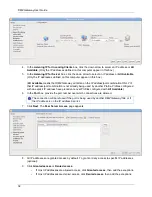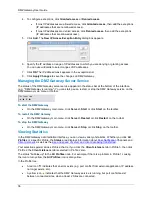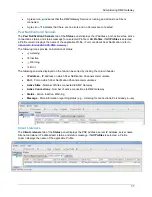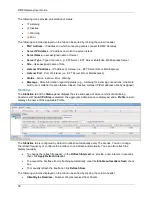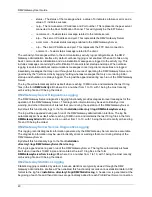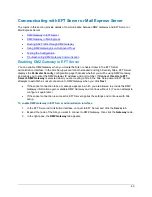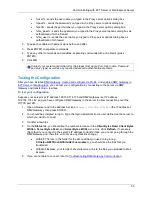
DMZ Gateway User Guide
40
o
status
– The status of the message where a value of 0 indicates a failure or error and a
value of 1 indicates success.
o
rs-ip
– The remote server IP Address and Port number. This represents the peer server
connected to the Peer Notification Channel. This will typically be the EFT Server.
o
rs-comment
– Textual status message related to the remote server.
o
s-ip
– The server IP Address and port. This represents the DMZ Gateway Server.
o
s-comment
– Textual status message related to the DMZ Gateway Server.
o
c-ip
– The client IP Address and port. This represents the FTP client connection.
o
c-omment
– Textual status message related to the client.
The verbosity of messages written to the communications activity log is configurable via the DMZ
Gateway administration interface. By default, verbose logging is not enabled. When set to false, only
basic communications initialization and de-initialization messages are logged to the activity log. This
includes messages concerning Peer Notification Channel listener startup and stops. When verbose
logging is enabled, additional communications messages concerning client connections are logged.
Essentially, messages that may occur throughout the course of operating the DMZ Gateway Server are
governed by the "Verbose Activity Logging" setting whereas messages that only occur during initial
startup and shutdown are always logged. The log will be appended during each run of the DMZ Gateway
Server.
The log file will automatically archives itself when reaching 10 MB in size and maintains the last 10 log
files in the form
DMZActivity.<X>
where X is a number from 1 to 10, with 1 being the most recently
archived log file and 10 being the oldest.
DMZ Gateway Server Diagnostics Logging
The DMZ Gateway Server diagnostics logging functionality provides diagnostic-level messages for the
operation of the DMZ Gateway Server. This diagnostic information may be used to identify errors,
warning, and other information of interest that occur during the operation of the DMZ Gateway Server.
By default this functionality logs to the file
<installation directory>\logs\DMZGatewayServer.log
.
The log will be appended during each run of the DMZ Gateway administration interface. The log file
automatically archives itself when reaching 10 MB in size and maintains the last 10 log files in the form
DMZGatewayAdmin.<X>
where X is a number from 1 to 10, with 1 being the most recently archived log
file and 10 being the oldest.
DMZ Gateway Server Service Diagnostics Logging
This logging records diagnostic information generated by the DMZ Gateway Server service executable.
The diagnostic information may be used to identify errors or warnings that occur during startup of the
DMZ Gateway Server.
By default this functionality logs to the file
<installation
directory>\logs\DMZGatewayServerService.log
.
The log is appended during each run of the DMZ Gateway Server. The log file automatically archives
itself when it reaches 10 MB in size and maintains the last 10 log files in the form
DMZGatewayServerService.log
.
<X>
where X is a number from 1 to 10, with 1 being the most recently
archived log file and 10 being the oldest.
DMZ Gateway Statistics Logging
Statistics logging is disabled by default, because statistics are typically viewed through the DMZ
Gateway administration interface. When enabled, this functionality records various statistical data in CSV
format to the log file
<installation directory>\logs\DMZStatistics.log
. A header row is generated at the
beginning of each file and then data rows are periodically added for each Profile/Peer Server connection.
Summary of Contents for DMZ Gateway v3.1
Page 1: ...GlobalSCAPE DMZ Gateway v3 1 User Guide Module for EFT Server 6 3 ...
Page 8: ...DMZ Gateway User Guide 8 ...
Page 9: ...What s New in DMZ Gateway 9 ...
Page 10: ...DMZ Gateway User Guide 10 ...
Page 11: ...What s New in DMZ Gateway 11 ...
Page 58: ...DMZ Gateway User Guide 58 ...
Page 60: ...DMZ Gateway User Guide 60 ...







